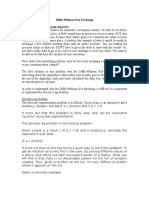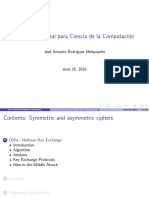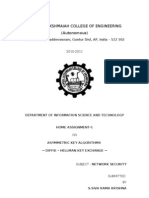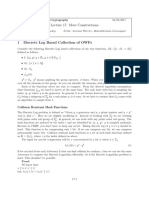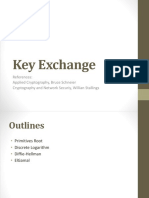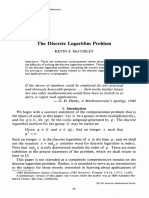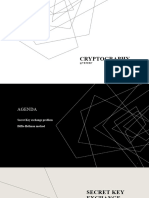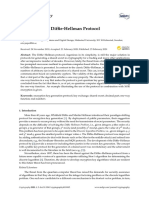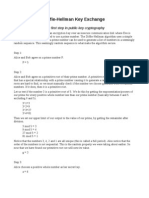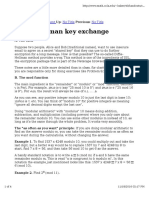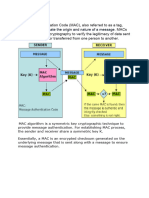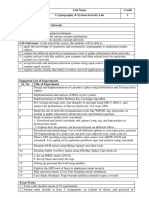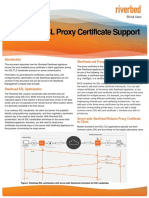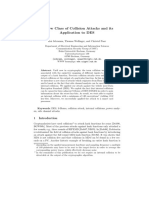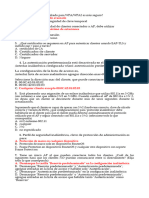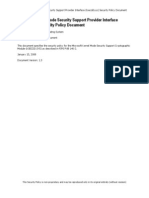0% found this document useful (0 votes)
152 views5 pagesDiscrete Logarithm & Diffie–Hellman
The document discusses the discrete logarithm problem (DLP) and how it relates to the Diffie-Hellman key exchange algorithm. The DLP involves finding the exponent that satisfies gx ≡ h (mod p) for a primitive root g. Diffie-Hellman uses the difficulty of solving the DLP to allow two parties to securely establish a shared secret key over an insecure channel.
Uploaded by
Sushil AzadCopyright
© © All Rights Reserved
We take content rights seriously. If you suspect this is your content, claim it here.
Available Formats
Download as DOCX, PDF, TXT or read online on Scribd
0% found this document useful (0 votes)
152 views5 pagesDiscrete Logarithm & Diffie–Hellman
The document discusses the discrete logarithm problem (DLP) and how it relates to the Diffie-Hellman key exchange algorithm. The DLP involves finding the exponent that satisfies gx ≡ h (mod p) for a primitive root g. Diffie-Hellman uses the difficulty of solving the DLP to allow two parties to securely establish a shared secret key over an insecure channel.
Uploaded by
Sushil AzadCopyright
© © All Rights Reserved
We take content rights seriously. If you suspect this is your content, claim it here.
Available Formats
Download as DOCX, PDF, TXT or read online on Scribd
/ 5




